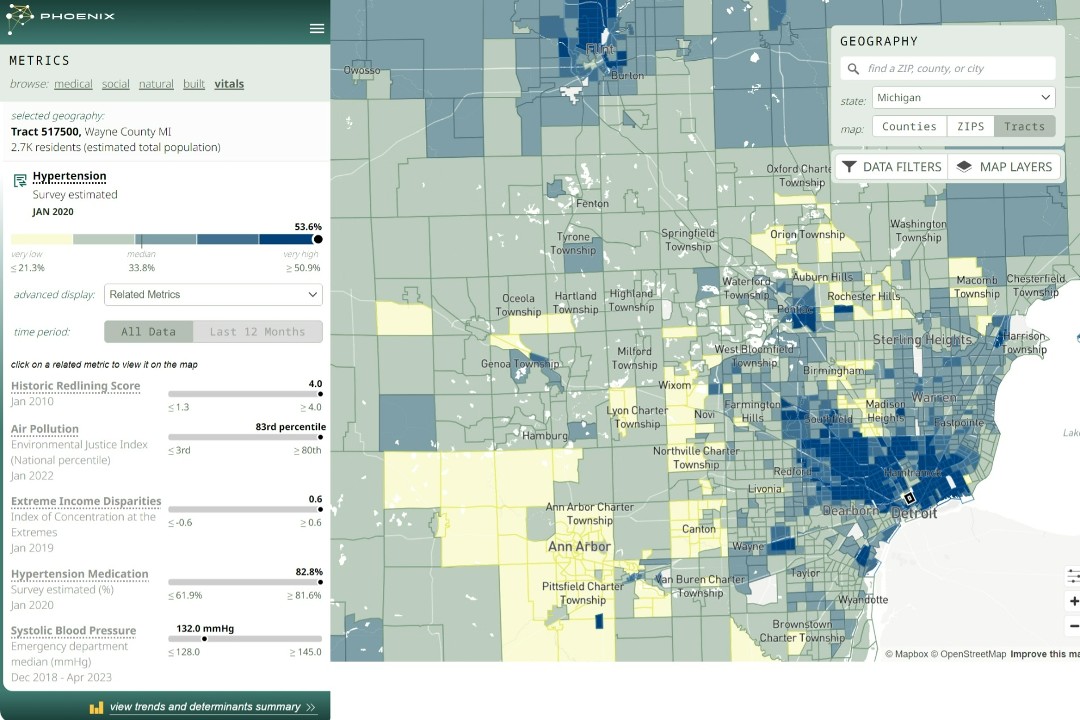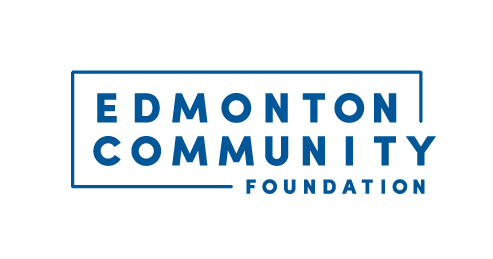
Darkhorse Analytics helps U.S. project visualize public health data
An Edmonton analytics company has partnered with a Michigan university to produce a comparative visualized database to equip policymakers and service providers with actionable insights to improve public health.
Darkhorse Analytics built the Population Health Outcomes Information Exchange (PHOENIX) for a project based at Wayne State University. PHOENIX allows users to see the intersections of what we think of as standard health data (diagnosis, disability, dental visits) with information traditionally thought of as social (socioeconomic status, gun violence, education).
Although one might reasonably conclude that social disadvantage and disease have links, PHOENIX's purpose is to provide decision-makers and "interventionalists" with a lens to examine complex factors and find their correlations.
"The reality is that we don't know what causes the distribution and frequency of disease, and if we did, we'd be a lot better at preventing it," said epidemiologist Steven Korzeniewski, the lead researcher on the project. "We can talk about social vulnerability. We can talk about poverty. But the reality is, we don't know which aspects of social suffering are actually contributing to which types of diseases."
Korzeniewski reached out to Darkhorse after seeing its Opportunity Atlas, about 18 months ago. Opportunity Atlas is a project commissioned by Brown and Harvard universities. Using anonymized data from 20 million Americans that spanned their childhoods to mid-30s, it traced wealth and poverty levels back to the neighbourhoods where those surveyed grew up. It was a viral hit and just one example of Darkhorse's work examining complex social phenomena through visualized data.
Wayne State's needs were a good fit for Darkhorse's capabilities, vice-president Craig Hiltz told Taproot. "There's a lot of effort on the front end to get this kind of data put together," he said. "They came with the data."
Release 3 is online now, and Darkhorse is working on Release 4, with potentially more to come, Hiltz said. "It's an evolution, and that's how these data visualizations often work," he said.
Engaging Darkhorse was "probably the best decision I made professionally in the last few years," Korzeniewski said. "It was more of an interview than a request. They wanted to know about the social commitment, what the project was about, and whether it was something to get involved in. They would tell you what's not possible (and) what is possible, and they will give you a reasonable answer as to why you're in either camp. And that is very rare, from what I have found."
PHOENIX makes it possible to visualize a great deal of health information in the Great Lakes region of the United States. It's not quite so straightforward to do such a project in Canada, said Health Cities CEO Reg Joseph.
"We have ethics requests for data, and those ethics requests are very, very specific, in the sense that someone that's doing research will have to identify specifically what the hypothesis is," he said. "And then what they're predicting the data is going to do, and then you need to make a request for just that data."
That doesn't translate well to the kind of work Wayne State did, Joseph added. "To be really clear, it's the policies… not our technical capabilities or our analytics capabilities. We have that in spades."





